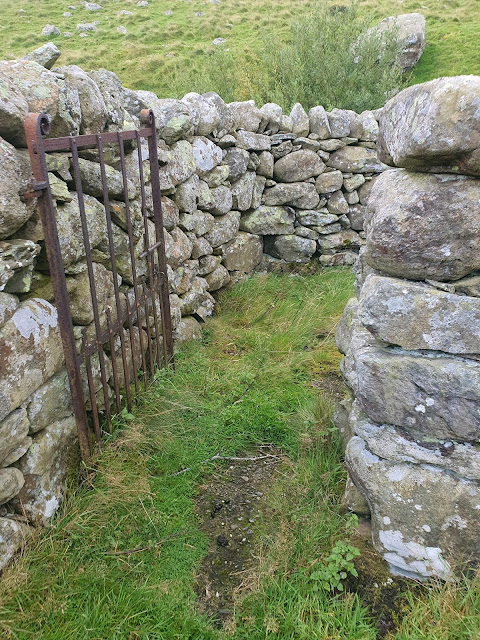There was a mixture of history on this wet walk from the car park at Pen y Gaer, past Pen y Castell, and along the side of Foel Lwyd and Drum. My aim was to find the impact scar of the WWII Avro Anson Mk.I AX583, which crashed on the slopes where Foel Lwyd and Drum meet on the 25th April, 1944. The Avro Anson was a twin engined light bomber, used frequently for training, and there seem to be quite a few of these crashed in the Carneddau. That's probably more an indication of their ubiquity than their safety record. At the present time there is only one remaining Avro Anson Mk.I in flight, the 'Gentle Annie,' based at Omaka Airfield in Blenheim, New Zealand.
The light rain turned to low cloud and heavy mist as I passed Pen y Castell; similar conditions to those in which many of these planes crashed. When on foot it can be hard to see where to go, so it's no surprise that planes crashed in these conditions, often with men on board who hadn't been flying for long, with poor instruments compared to what planes have nowadays. In the case of this crash, however, the plane had been on a night navigation and bombing exercise. Five men were killed, one of them being a Canadian officer. You can read more about the crash here.
After leaving the crash site I walked on down the hill, getting wetter and wetter, through marshy ground, until I reached a rather wonderful sheep fold. I passed through the sheep fold to eventually emerge on Ffordd Mynydd, for a walk on tarmac the mile or so home.
Leaving the crash scar behind. Perhaps the absence of rushes either side show how wide it used to be?
A first glimpse of the sheep fold. There are a number of these amazing, flower-like sheep folds across the hills, much more impressive than the more usual one or two celled ones that can be seen. From the air they look rather like blossoming flowers, with petals coming out from a central hub. This description of another similar fold on the Coflein website gives a good explanation for the reasons behind these complicated, elaborate folds, and paints a wonderful picture of community on the mountainside: "There is no clear record of when these complicated structures originated. [Their] size and complexity attest to construction and continuing maintenance by generations of farmers from at least the eighteenth century. Sheep belonging to many farms and sharing a common sheepwalk would be gathered in through the funnelled entrance and sorted, on occasions such as shearing, into the small cells belonging to particular farms."
The fold is set right against the narrow mountain stream, the presence of which is indicated by the low willow trees along its edge.
A narrow entrance from one cell to another.
















































































No comments:
Post a Comment